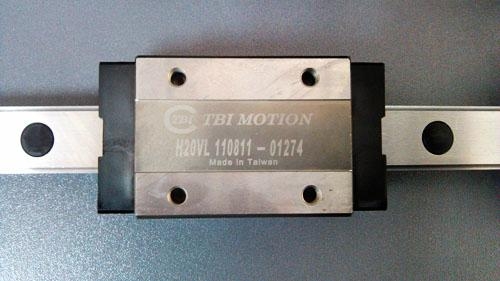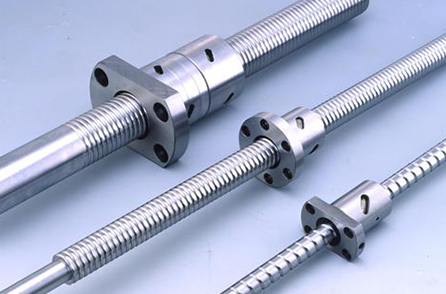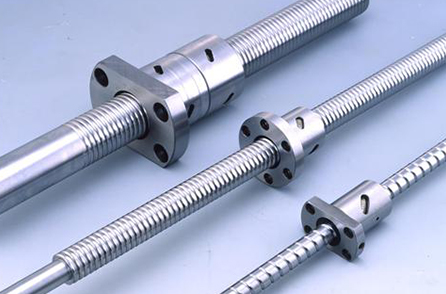新聞中心
軸承座損壞的六大表現(xiàn)方式
來源:http://baoxianyingxiao.cn/ 日期:2023-06-20 發(fā)布人:
大家知道軸承座損壞的六大表現(xiàn)是什么嗎?不知道沒關(guān)系,下面導(dǎo)軌絲杠廠家小編慢慢地告訴大家吧!
Do you know the six major manifestations of bearing seat damage? I don't know, it's okay. Below, the guide rail screw manufacturer's editor will slowly tell everyone!
(1)機(jī)械損傷
(1) Mechanical damage
軸承座機(jī)械損傷是指軸瓦的合金表面出現(xiàn)不同程度的溝痕,嚴(yán)重時在接觸表面發(fā)生金屬剝離以及出現(xiàn)大面積的雜亂劃傷;一般情況下,接觸面損傷與燒蝕現(xiàn)象同時存在。造成軸承機(jī)械損傷的主要原因是軸承表面難以形成油膜或油膜被嚴(yán)重破壞。
Mechanical damage to the bearing seat refers to the occurrence of varying degrees of grooves on the alloy surface of the bearing pad, with severe cases of metal peeling and large-scale random scratches on the contact surface; In general, both contact surface damage and ablation occur simultaneously. The main reason for mechanical damage to bearings is that it is difficult to form an oil film on the bearing surface or the oil film is severely damaged.
(2)軸承穴蝕
(2) Bearing cavitation
軸承座在氣缸壓力沖擊載荷的反復(fù)作用下,表面層發(fā)生塑性變形和冷作硬化,局部喪失變形能力,逐步形成紋并不斷擴(kuò)展,然后隨著磨屑的脫落,在受載表面層形成穴。一般軸瓦發(fā)生穴蝕時,是先出現(xiàn)凹坑,然后這種凹坑逐步擴(kuò)大并引起合金層界面的開裂,裂紋沿著界面的平行方向擴(kuò)展,直到剝落為止。軸承座穴蝕的主要原因是,由于油槽和油孔等結(jié)構(gòu)要素的橫斷面突然改變引起油流強(qiáng)烈紊亂,在油流紊亂的真空區(qū)形成氣泡,隨后由于壓力升高,氣泡潰滅而產(chǎn)生穴蝕。穴蝕一般發(fā)生在軸承的高載區(qū),如曲軸主軸承的下軸瓦上。
Under the repeated action of cylinder pressure impact load, the bearing seat undergoes plastic deformation and cold work hardening on the surface layer, locally losing deformation ability, gradually forming and expanding patterns, and then forming cavities on the loaded surface layer as the debris falls off. When cavitation occurs in bearing shells, pits first appear, and then these pits gradually expand and cause cracking at the alloy layer interface. The cracks propagate parallel to the interface until they peel off. The main reason for bearing seat cavitation is that the sudden changes in the cross-sectional area of structural elements such as oil grooves and oil holes cause strong turbulence in the oil flow, forming bubbles in the vacuum zone where the oil flow is disrupted. Subsequently, due to the increase in pressure, the bubbles collapse and cavitation occur. Cavitation corrosion generally occurs in the high load area of bearings, such as the lower bearing shell of the crankshaft main bearing.
(3)疲勞點(diǎn)蝕
(3) Fatigue pitting
軸承疲勞點(diǎn)蝕是指,由于發(fā)動機(jī)超負(fù)荷工作,使得軸承工作過熱及軸承間隙過大,造成軸承中部疲勞損傷疲勞點(diǎn)蝕或者疲勞脫落。這種損傷大多是因為超載軸承間隙過大,或者潤滑油不清潔內(nèi)中混有異物所致。因此,使用時應(yīng)該注意避免軸承超載工作不要以過低或過高的轉(zhuǎn)速運(yùn)轉(zhuǎn);怠速時要將發(fā)動機(jī)調(diào)整到穩(wěn)定狀態(tài);確保正常的軸承間隙,防止發(fā)動機(jī)轉(zhuǎn)速過高或過低;檢查調(diào)整冷卻系統(tǒng)的工作情況,確保發(fā)動機(jī)的工作溫度適宜。
Bearing fatigue pitting refers to the overheating and excessive clearance of bearings due to engine overload, resulting in fatigue damage, fatigue pitting, or fatigue detachment in the middle of the bearing. This type of damage is mostly caused by excessive bearing clearance due to overloading, or impurities mixed with unclean lubricating oil. Therefore, when using, attention should be paid to avoiding bearing overload and not running at too low or too high a speed; When idling, adjust the engine to a stable state; Ensure normal bearing clearance to prevent engine speed from being too high or too low; Check and adjust the operation of the cooling system to ensure that the operating temperature of the engine is suitable.
(4)軸承合金腐蝕
(4) Corrosion of bearing alloy
軸承合金腐蝕一般是區(qū)為潤滑油不純,潤滑油中所臺的化學(xué)雜質(zhì)(酸性氧化物等)使軸承合金氧化而生成酸性物質(zhì),引起軸承合金部分脫落,形成無規(guī)則的微小裂孔或小凹坑。軸承合金腐蝕的主要原因是潤滑油選用不當(dāng)軸承材料耐腐蝕性差,或者發(fā)動機(jī)工作粗暴溫度過高等。
Bearing alloy corrosion is generally caused by impure lubricating oil, and the chemical impurities (Acidic oxide, etc.) in the lubricating oil oxidize the bearing alloy to generate acid substances, which causes part of the bearing alloy to fall off, forming irregular micro cracks or small pits. The main reasons for bearing alloy corrosion are improper selection of lubricating oil, poor corrosion resistance of bearing materials, or rough engine operation with high temperatures.


(5)軸承燒熔
(5) Bearing melting
軸頸和軸承摩擦副之間有微小的凸起金屬面直接接觸,形成局部高溫,在潤滑不足冷卻不良的情況下,使軸承合金發(fā)黑或局部燒熔。此故障常為軸頸與軸承配合過緊所致;潤滑油壓力不足也容易使軸承燒毀。
There are small raised metal surfaces between the journal and the bearing friction pair that directly contact, forming local high temperatures. In the case of insufficient lubrication and poor cooling, the bearing alloy becomes black or locally melted. This fault is often caused by the tight fit between the journal and the bearing; Insufficient lubricating oil pressure can also easily cause bearing burnout.
(6)軸承走外圓
(6) Outer circle of bearing
軸承走外圓就是軸承在座孔內(nèi)有相對轉(zhuǎn)動。軸承走外圓后,不僅影響軸承的散熱,容易使軸承內(nèi)表面合金燒蝕,而且還會使軸承背面損傷,嚴(yán)重時燒毀軸承。其主要原因是,軸承過短凸榫損傷加工或者安裝不符合規(guī)范等。
The outer circle of the bearing is the relative rotation of the bearing in the seat hole. After the bearing passes through the outer circle, not only does it affect the heat dissipation of the bearing, which can easily cause the alloy on the inner surface of the bearing to burn out, but it can also damage the back of the bearing, and in severe cases, burn out the bearing. The main reason is that the bearing is too short, the tenon is damaged, and the processing or installation does not meet the specifications.
軸承座損壞的六大表現(xiàn)方式相關(guān)事項就講解到這里,希望能夠給您好的幫助,更多事項就來我們網(wǎng)站http://baoxianyingxiao.cn咨詢!
That's all for the six major manifestations of bearing seat damage. We hope to provide you with good help. For more information, please come to our website http://baoxianyingxiao.cn consulting service
 導(dǎo)軌絲杠:從設(shè)計結(jié)構(gòu)...<>
導(dǎo)軌絲杠:從設(shè)計結(jié)構(gòu)...<> 大型絲杠的性能設(shè)計介...<>
大型絲杠的性能設(shè)計介...<> 梯形絲杠和滾珠絲杠的...<>
梯形絲杠和滾珠絲杠的...<> 滾珠絲桿目前的行業(yè)的...<>
滾珠絲桿目前的行業(yè)的...<> 滾珠絲杠螺母油封更換...<>
滾珠絲杠螺母油封更換...<>
相關(guān):



